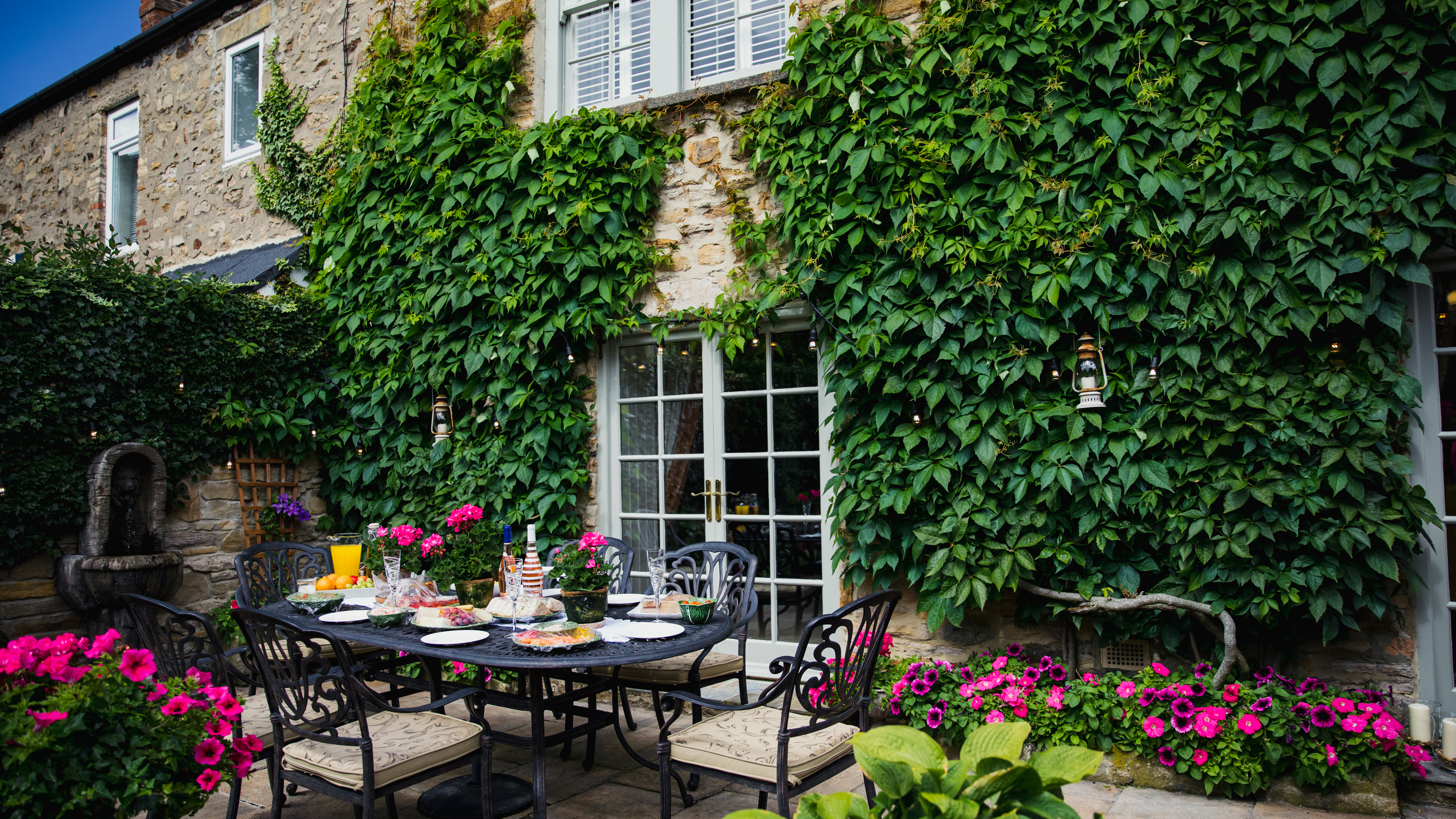
If you're thinking about how to kill ivy that's growing up your house or garden wall, you may want to reconsider. Ivy is commonly thought to cause structural damage and to cause salt marks on brick walls, and many homeowners seek to eradicate it completely from their homes and yards. But is ivy really as harmful as it's presented?
We've spoken to professional gardeners with over 30 years of experience between them, and they've told us that you should actually consider keeping your ivy as part of your backyard ideas, rather than killing it. Here's why.
Ivy doesn't always cause structural damage to homes
Yes, ivy can cause structural damage to homes, but only if your building already has existing structural damage. Matt Eddleston, professional gardener and founder of Gardening Vibe, says that 'If your brick walls are sound, then ivy is unlikely to do any harm. But some species of ivy, such as English ivy, send out aerial roots for support. These roots can exploit cracks in masonry, widening the gaps and working their way through the mortar. So if you already have a small amount of structural damage, ivy can make it worse.'
In other words, if you have ivy growing up your walls and know that they have cracks in them, the best course of action is to cut back the ivy and repair the damage. No cracks, no damage, and you can safely leave your ivy alone. A good pair of secateurs will work for small sections, while a cordless hedge trimmer could be best for larger sections.

In fact, according to Gabriel J. Croteau Certified Master Gardner at Juliei Salone, 'Ivy can actually protect your building instead of damaging it', including protecting walls 'from frost, salt, and pollution.' It can also help make your home more energy-efficient; Croteau told us that 'ivy-covered walls kept the inside of the building 15 percent warmer in the winter and 36 percent cooler in the summer.'
So, if your home is structurally sound and well maintained, ivy can actually be beneficial, not harmful, not to mention that it looks beautiful growing up walls.
Ivy doesn't kill trees
Yep, that rumor you heard about ivy killing trees, it's also a myth: 'ivy isn't a parasite and doesn't take its needed nutrients from a tree. Ivy also doesn't suffocate or strangle the tree it only travels up it to get to a light source.' Again, if a tree is already sick and dying, ivy can overpower it, but it won't do any harm to a healthy tree.
Join our newsletter
Get small space home decor ideas, celeb inspiration, DIY tips and more, straight to your inbox!
Are there any positives of ivy?
Moreover, ivy isn't just good for your home – it's great when grown as part of a wildlife garden. Croteau says that 'in the fall, ivy produces small flowers that produce nectar and is a food source for many insects during a time when it's hard for them to find food. Some types of ivy stay green year-round giving small animals shelter all year long.'

A butterfly feeding on ivy blossoms
One thing to be aware of with ivy is that poison ivy is toxic when touched during certain times of the year. 'In the spring and summer, ivy gives off harmful toxins that can cause rashes in humans if touched directly', explains Croteau.
'Ivy berries, on the other hand, have traditional medicinal uses, especially 'for curing coughs and fevers after you grind them into powder form before mixing with water or milk.'
Are there ways to control ivy without completely getting rid of it?
If you simply don't like too much ivy growing in your yard, you can trim it back without having to kill it completely. Eddleston advises that 'if ivy is starting to spread to places you don’t want it to grow, you can cut the vines back, all the way to the ground if necessary. Then detach it from any surfaces it’s clinging to. The vines will grow back, so you’ll have to monitor the situation and cut them again when they regrow. Regular mowing is a good way to control ivy groundcover.'
Or just embrace it: it looks so romantic, especially when it's growing up an older home!
Anna is a professional writer with many years of experience. She has a passion for contemporary home decor and gardening. She covers a range of topics, from practical advice to interior and garden design.